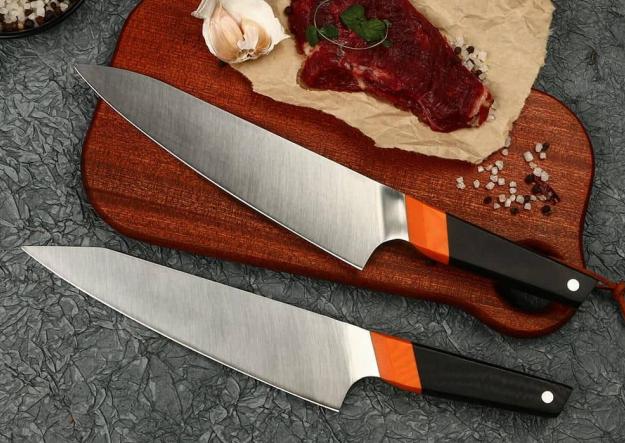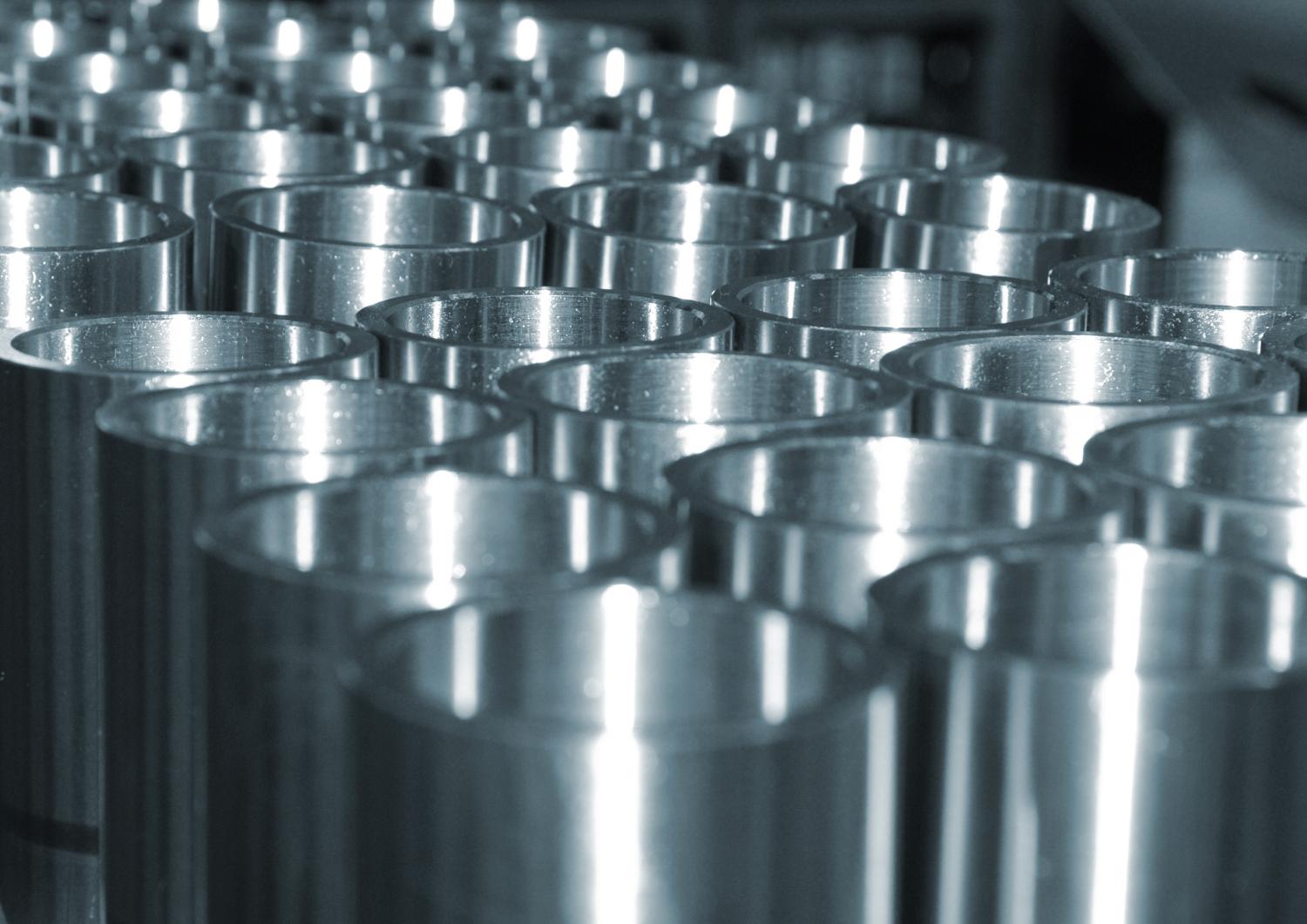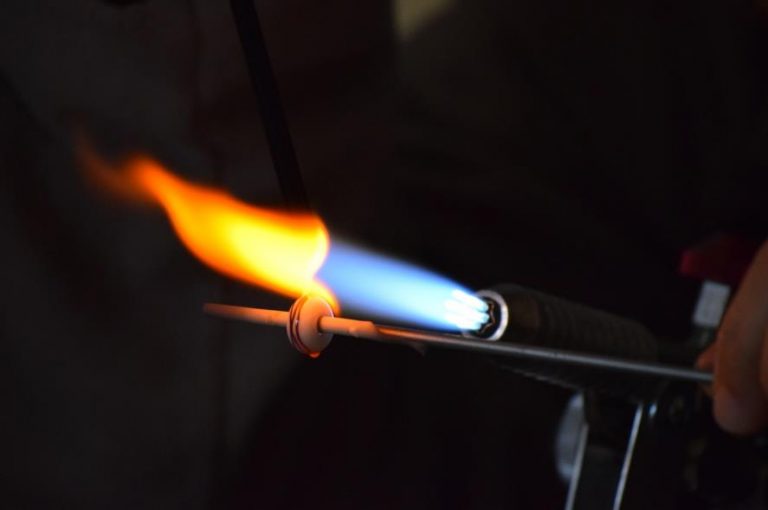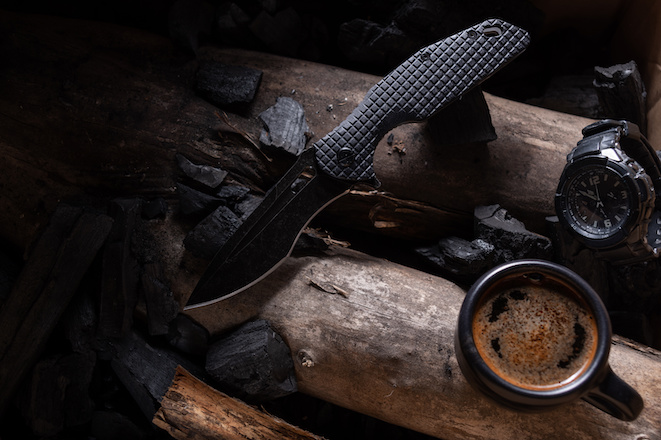Introduction
In the world of stainless knife steels, Sandvik 12C27 and 14C28N stand out as two of the most trusted options for makers and users alike. Both come from Sandvik, a Swedish metallurgical giant (now operating under the name Alleima AB) known for its extremely clean, consistent steels that deliver reliable performance in real-world cutting tools.
These steels are widely used by brands such as Morakniv, Kershaw, and other major knife manufacturers for their excellent balance of hardness, corrosion resistance, and toughness.
But when it comes to 12C27 vs 14C28N, a common question arises:
Is 14C28N Better Than 12C27?
In short — yes, in many ways, but not always.
14C28N is an evolution of 12C27, optimized for edge retention and corrosion resistance, while maintaining Sandvik’s hallmark toughness and ease of sharpening.
However, that doesn’t automatically make 12C27 obsolete.
12C27 remains a favorite among outdoor knife makers and Scandinavian bushcraft brands because of its superior toughness and simple, forgiving heat treatment.
To decide which is better for your needs, let’s look at their composition and how these tiny alloy tweaks translate into real-world performance.

Composition Comparison
| Element | 12C27 | 14C28N | Purpose |
|---|---|---|---|
| Carbon (C) | 0.60% | 0.62% | Improves hardness, wear resistance, and edge stability |
| Chromium (Cr) | 13.5% | 14.0% | Key element for corrosion resistance |
| Manganese (Mn) | 0.40% | 0.60% | Enhances hardenability and grain refinement |
| Silicon (Si) | 0.40% | 0.20% | Strengthens the steel and improves temper resistance |
| Nitrogen (N) | — | 0.11% | Adds hardness and corrosion resistance while refining the grain |
Key takeaway:
14C28N introduces nitrogen into the alloy, replacing part of the carbon’s role.
This change allows it to form finer, more stable carbides, which improve corrosion resistance and help the steel maintain sharpness longer — without becoming brittle.
Buy Wholesale Knives and Start Scaling up with Us Today
Contact us and connect with a sales rep to get a free quote.
Properties Comparison
| Property | 12C27 | 14C28N |
|---|---|---|
| Hardness (HRC) | 54–60 | 56–62 |
| Edge Retention | ⭐⭐⭐⭐☆ | ⭐⭐⭐⭐⭐ |
| Corrosion Resistance | ⭐⭐⭐⭐☆ | ⭐⭐⭐⭐⭐ |
| Toughness | ⭐⭐⭐⭐⭐ | ⭐⭐⭐⭐☆ |
| Ease of Sharpening | ⭐⭐⭐⭐⭐ | ⭐⭐⭐⭐☆ |
| Polishability | ⭐⭐⭐⭐⭐ | ⭐⭐⭐⭐⭐ |
Key Differences Explained
Edge Retention
The most notable difference between 12C27 and 14C28N lies in edge retention.
Thanks to the presence of nitrogen, 14C28N forms fine, evenly distributed carbides that resist wear more effectively. The edge stays sharp longer, particularly in slicing and kitchen applications.
By contrast, 12C27 dulls a little faster under abrasive cutting tasks, but its edge is more stable under lateral pressure, meaning it can take a micro-roll instead of chipping — a desirable trait for outdoor and survival knives.
Corrosion Resistance
Both are stainless, but 14C28N wins this category.
The nitrogen not only replaces carbon in forming carbides but also reduces the amount of chromium tied up in those carbides, freeing more chromium to enhance corrosion resistance in the steel matrix.
In practice, this means 14C28N is less prone to staining or pitting when exposed to moisture, acidic foods, or salty environments — ideal for kitchen and coastal use.
Toughness

Toughness refers to how well steel resists chipping or cracking.
Here, 12C27 is the clear winner. It’s a little softer and has a cleaner carbide structure, allowing it to flex slightly under stress. This is why many Scandinavian bushcraft knives and hunting blades still use 12C27 — it can handle batoning and prying without breaking.
14C28N is still tough for its hardness level, but it’s slightly more brittle in comparison. For fine cutting, that trade-off is worthwhile; for rough use, it can be a downside.
Ease of Sharpening
Both steels are very user-friendly compared to powder metallurgy or high-vanadium alloys like S30V or M390.
However, 12C27 takes a small lead — its slightly softer matrix makes it easier to restore a razor edge even with basic stones or field sharpeners.
14C28N resists abrasion more, meaning it takes a bit longer to reprofile but rewards you with a sharper, longer-lasting edge.
Heat Treatment Range
Both steels are known for broad heat treatment flexibility.
12C27 can be hardened from 54 to 60 HRC depending on application, allowing makers to prioritize either toughness or edge retention.
14C28N, on the other hand, peaks around 61–62 HRC when treated correctly — giving it the potential for a keener edge without becoming overly brittle.
Buy Wholesale Knives and Start Scaling up with Us Today
Contact us and connect with a sales rep to get a free quote.
Real-World Use and Knife Maker Perspectives
Knife manufacturers often choose between 12C27 and 14C28N based on the intended purpose of the knife:
- 12C27 is favored by outdoor and bushcraft knife makers for its durability, ease of sharpening, and resilience in cold environments.
- 14C28N is popular among kitchen knife and EDC makers, who appreciate its edge longevity and corrosion resistance.
For custom knifemakers, both steels offer excellent grindability and clean mirror finishes, making them great for polished blades or branded production lines.
Which One Should You Choose
If you’re an outdoor enthusiast or knife maker looking for toughness and ease of maintenance, 12C27 will serve you well. It’s reliable, affordable, and performs excellently under rugged use.
If you’re a kitchen user or EDC carrier who values edge life and rust resistance, 14C28N is the smarter choice. It’s a true upgrade for humid or food-contact environments.
In short:
- 12C27 → Tougher, easier to sharpen, best for outdoor knives.
- 14C28N → Sharper, more corrosion-resistant, ideal for kitchen and EDC knives.
Buy Wholesale Knives and Start Scaling up with Us Today
Contact us and connect with a sales rep to get a free quote.
Frequently Asked Questions
Is 14C28N a direct upgrade from 12C27?
It’s an upgraded variant for high-demand use, but not a “one-size-fits-all” improvement—12C27 still outshines for easy maintenance and everyday light use.
Does 14C28N require more maintenance than 12C27?
Slightly—its higher carbon content means occasional oiling (especially in humid/salty environments) helps preserve its edge, but both steels are low-maintenance overall.
Can beginners sharpen 14C28N easily?
It’s slightly harder to sharpen than 12C27, but with basic sharpening tools (whetstones, sharpening rods), beginners can maintain it with minimal practice.
How do 12C27 and 14C28N compare to 440C or D2 steel?
They offer better corrosion resistance than D2 and simpler sharpening than 440C; 14C28N rivals 440C in edge retention, while 12C27 is more user-friendly than D2.
Conclusion
Both 12C27 and 14C28N represent Sandvik’s commitment to metallurgical precision and balance. They’re not high-end super steels, but they offer real-world performance that knife users trust — clean cutting, easy sharpening, and excellent value.
- Choose 12C27 for toughness, ease of sharpening, and outdoor reliability.
- Choose 14C28N for edge longevity and superior rust resistance.
At Leeknives, we specialize in OEM and wholesale knife manufacturing using premium steels like 12C27 and 14C28N.
Whether you’re a brand owner, retailer, or custom designer, contact us for a free quote and explore how our knives can bring your ideas to life.







